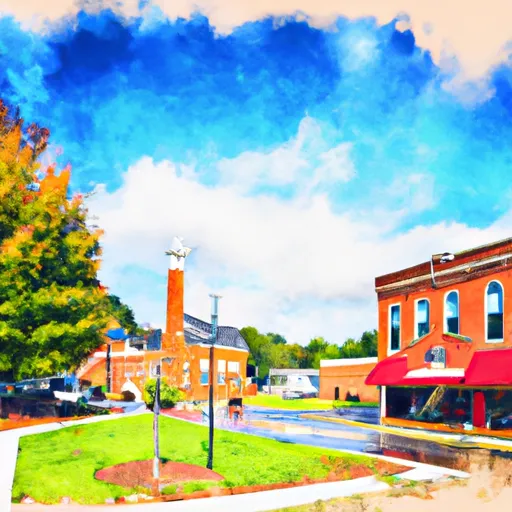-
 Snoflo Premium
Snoflo Premium
Get unlimited access to all our content
With no Ad interruptions! - Start Your Free Trial Login with existing account
Lynx
Eden Index
Climate
8.2
•
Recreation
2.2
•
Community
•
Safeguard
4.1/10

Lynx, Ohio is a small village located in Adams County, in the southwestern part of the state. The village enjoys a humid continental climate, characterized by hot, humid summers and cold winters. Average temperatures range from 30°F (-1°C) in January to 83°F (28°C) in July, with an annual precipitation of around 40 inches (1,000 mm).
As for hydrology constituents, Lynx is surrounded by the picturesque Ohio Brush Creek. This creek is known for its diverse aquatic life, including various fish species, turtles, and amphibians. It also serves as a popular spot for fishing, canoeing, and kayaking, providing ample opportunities for outdoor enthusiasts to explore and enjoy the waterways.
In addition to the water activities, Lynx offers various outdoor recreation opportunities. The village is located near the Edge of Appalachia Preserve, a nature sanctuary managed by the Nature Conservancy. This preserve boasts stunning landscapes, diverse wildlife, and numerous hiking trails that allow visitors to immerse themselves in the beauty of the region. Lynx is also surrounded by lush forests, making it a great destination for camping, birdwatching, and nature photography.
Overall, Lynx, Ohio provides a delightful mix of climate, hydrology constituents, and outdoor recreation opportunities, making it an attractive destination for nature lovers and those seeking outdoor adventures.
What is the Eden Index?
The Snoflo Eden Index serves as a comprehensive rating system for regions, evaluating their desirability through a holistic assessment of climate health, outdoor recreation opportunities, and natural disaster risk, acknowledging the profound impact of these factors on livability and well-being.
Climate Health Indicator (CHI): 8.2
Lynx receives approximately
1159mm of rain per year,
with humidity levels near 82%
and air temperatures averaging around
12°C.
Lynx has a plant hardyness factor of
6, meaning
plants and agriculture in this region thrive during a short period during spring and early summer. Most
plants will die off during the colder winter months.
By considering the ideal temperature range, reliable water supplies, clean air, and stable seasonal rain or snowpacks, the Climate Health Indicator (CHI) underscores the significance of a healthy climate as the foundation for quality living.
A healthy climate is paramount for ensuring a high quality of life and livability in a region, fostering both physical well-being and environmental harmony. This can be characterized by ideal temperatures, reliable access to water supplies, clean air, and consistent seasonal rain or snowpacks.
Weather Forecast
Streamflow Conditions
Scioto
Area Rivers
Scioto
Snowpack Depths
Scioto
Reservoir Storage Capacity
Scioto
Groundwater Levels
Recreational Opportunity Index (ROI): 2.2
The Recreational Opportunity Index (ROI) recognizes the value of outdoor recreational options, such as parks, hiking trails, camping sites, and fishing spots, while acknowledging that climate plays a pivotal role in ensuring the comfort and consistency of these experiences.
Access to outdoor recreational opportunities, encompassing activities such as parks, hiking, camping, and fishing, is crucial for overall well-being, and the climate plays a pivotal role in enabling and enhancing these experiences, ensuring that individuals can engage in nature-based activities comfortably and consistently.
Camping Areas
| Campground | Campsites | Reservations | Toilets | Showers | Elevation |
|---|---|---|---|---|---|
| North Fork - DFWR | None | 734 ft | |||
| Twin Knobs Rec Area | 623 | 773 ft | |||
| Paragon | 9 | 731 ft | |||
| Zilpo Rec Area | 368 | 764 ft | |||
| Clay Lick - DFWR | None | 740 ft | |||
| Clear Creek Rec Area | 23 | 762 ft | |||
| Willie Begley Memorial RV Park | None | 954 ft | |||
| Trace Branch - Buckhorn Lake | 20 | 865 ft | |||
| Buckhorn Dam Rec Area - Buckhorn Lake | 33 | 740 ft |
Nearby Ski Areas
Catastrophe Safeguard Index (CSI):
The Catastrophe Safeguard Index (CSI) recognizes that natural disaster risk, encompassing floods, fires, hurricanes, and tornadoes, can drastically affect safety and the overall appeal of an area.
The level of natural disaster risk in a region significantly affects safety and the overall livability, with climate change amplifying these risks by potentially increasing the frequency and intensity of events like floods, fires, hurricanes, and tornadoes, thereby posing substantial challenges to community resilience and well-being.
Community Resilience Indicator (CRI):
The Community Resilience Indicator (CRI) recognizes that education, healthcare, and socioeconomics are crucial to the well-being of a region. The CRI acknowledges the profound impact of these elements on residents' overall quality of life. By evaluating educational resources, healthcare accessibility, and economic inclusivity, the index captures the essential aspects that contribute to a thriving community, fostering resident satisfaction, equity, and social cohesion.

